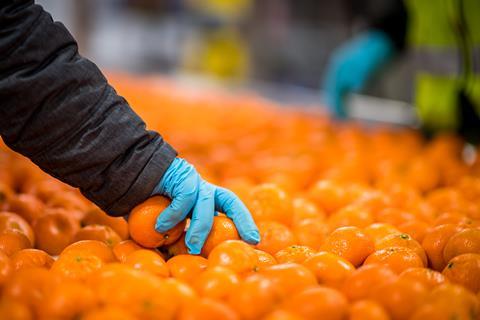Comment: Edwin Wentink, vice president business development– Europe at Lineage, highlights the importance of a joined-up approach to cold chain logistics

Across Europe, there’s a greater need for fruit. In fact, the Organisation for Economic Cooperation and Development reveals a trend of increasing fruit consumption. Thirty-three per cent of UK adults now exceed the recommended daily fruit intake. This is followed by people in the Netherlands (30 per cent), France (20 per cent), Portugal (15 per cent) and Germany (15 per cent) consuming five or more portions a day.
However, this creates a delicate challenge: meeting rising demand while minimising waste. According to Eurostat, every year in the European Union, over 58m tonnes of food is wasted. Fruits make up for a large percentage of such spoilage within the supply chain due to its perishable nature. Yet this doesn’t need to be the reality.
A race against time
The moment fruit is harvested, the race against spoilage and quality decline begins. Keeping the fruit fresh regardless of its origins is by no means easy. Every misstep – from improper packaging to fluctuating temperatures – can take its toll. That is where the magic of cold chain logistics comes into play.
Admittedly, it’s an intricate dance: packaging, bagging, temperature control, restacking, restyling, containers, specialised treatments, fumigation, transportation, processing and even customs brokerage. And each fruit also demands unique care, with berries and bananas needing vastly different temperature and humidity storage environments. This is where innovation is critical.
In the cold chain, technology is the unsung hero. Take Lineage’s Cool Port I Rotterdam location, which stores mostly fruit destined for export. The automated warehouse has mobile racking storage to ensure maximising and utilising the storage capacity and conventional trucks that bring in pallets, streamlining the movement and storage of fruits.
A connected “fresh” network
Beyond infrastructure, a network of experts is essential. Innovation is crucial, however, if fruit is to move through the supply chain and stay fresh it requires strong relationships with producers, distributors, and retailers. It’s about having local expertise with a global reach dedicated to fruit excellence.
At Lineage, for instance, this approach has allowed us to anticipate market demands and react quickly to previous disruptions. One way we’ve done this is by prioritising port-centric locations and dedicated facilities, along with cutting edge transport solutions.
Transportation is essential. As part of The Climate Pledge, we have committed to be net-zero carbon across business operations by 2040. That’s why we have invested in cutting-edge solutions like electric trucks to minimise our emissions compared to using conventional trucks. We have also reduced empty route miles and idling time to reduce emissions.
A collaborative supply chain
The challenges in the fresh produce market are substantial, but they’re not impossible. An interconnected web of temperature-controlled warehouses, transport fleets and logistics centres has allowed organisations to safeguard the quality and freshness of fruits.
It’s clear that the business of fruit is different to other foods. It requires a service that’s entirely focused on handling, storing and transporting fresh produce. With Lineage Fresh, we’re committed to safeguarding this journey, moving fruit through the supply chain swiftly and safely.
Edwin Wentink is vice president business development, Europe at Lineage



